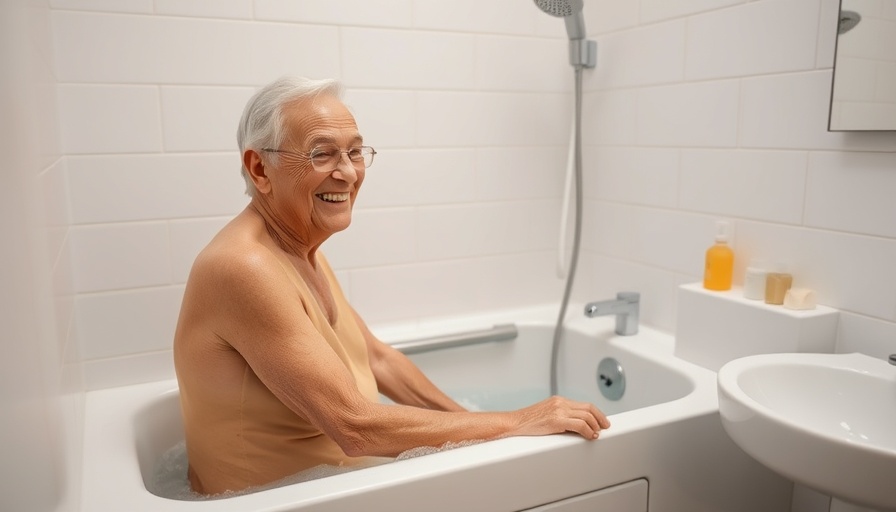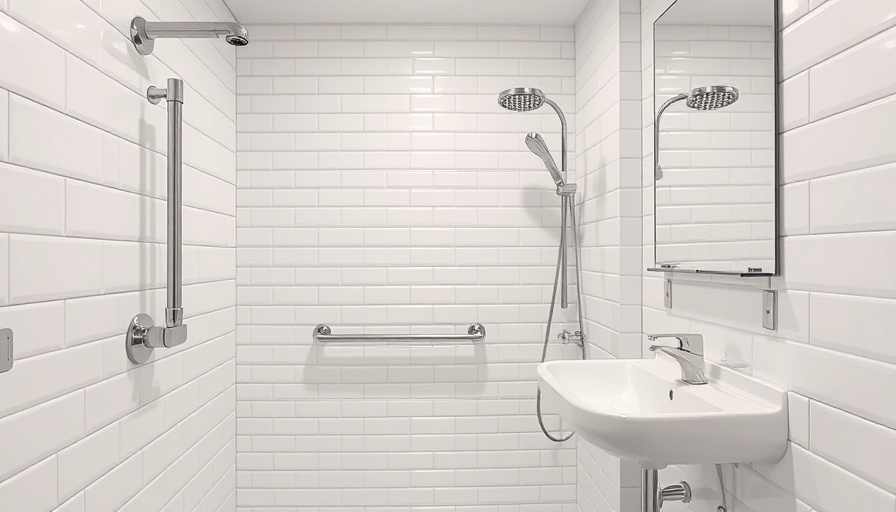
Understanding the Importance of Bathing Safety for Seniors
As we age, maintaining independence becomes more crucial to our quality of life, and something as routine as bathing can quickly turn into a hazardous challenge. For seniors, the bathroom poses particular risks: wet floors, cramped spaces, and inadequate support can lead to falls and serious injuries. Statistics indicate that approximately one in four older adults suffers a fall annually, making it essential for caregivers to take preventative measures. Empowering seniors to manage their own bathing routine is not simply about safety but rather about fostering independence.
Common Bathroom Hazards: Navigating the Risks
The bathroom, despite being a private sanctuary for self-care, is one of the most dangerous rooms in a house for seniors. Factors like slippery surfaces and limited mobility complicate an otherwise ordinary activity. Wet floors are often an invitation for accidents, and leaner users might struggle with the effort of climbing in or out of the shower. Recognizing these hazards can help caregivers set in place practical modifications to reduce risk and encourage participation in self-care routines.
Essential Equipment: Tools for Independent Bathing
Having the right equipment can drastically improve the safety and comfort level for seniors during bathing. Key installations can include:
- Grab Bars: Installed near the shower or bathtub, grab bars offer valuable support, enabling seniors to stabilize themselves while entering or exiting the slippery areas.
- Non-Slip Mats: These rubber or textured mats significantly reduce the risk of slipping. It's vital to regularly check their condition to ensure they remain effective.
- Shower Chairs: For those whose mobility is further challenged, shower chairs can allow them to bathe safely while seated. This equipment can be both practical and reassuring.
Designing a Senior-Friendly Bathroom
Transforming a space into a senior-friendly bathroom involves thoughtful planning beyond merely adding safety features. Here are some considerations:
- Accessible Layout: Position items such as soap, towels, and toiletries within easy reach to avoid stretching or bending, which could lead to falls.
- Proper Lighting: Adequate lighting is imperative, especially for seniors who may struggle with diminishing eyesight. Bright overhead lighting, complemented by light fixtures around vanity areas, can help navigate the space effectively.
Smart Home Technology: Enhancing Senior Safety
Integrating smart technologies into the bathroom can also benefit seniors significantly. Innovations such as:
- Smart Showers and Tubs: These can allow for voice-activated controls and temperature settings, making them convenient and safe.
- Leak Sensors: These devices alert caregivers to unexpected water presence, preventing slips and potential accidents caused by floods.
Encouraging Seniors’ Confidence in the Bathroom
It's vital to approach bathing assistance with respect for seniors’ dignity. Empowering them to maintain as much independence as feasible not only boosts confidence but can improve mental health and overall well-being. Engage in open discussions with seniors regarding their needs and preferences in bathroom safety measures; after all, their comfort is of utmost importance.
Conclusion: Take Action to Foster Independence
Helping seniors maintain independence in the bathroom is instrumental to their quality of life. By understanding common hazards, utilizing essential safety equipment, redesigning environments for accessibility, and incorporating smart technology, caregivers can create a safer bathing experience while encouraging autonomy. Assess your loved one's bathroom today and consider what safety upgrades can be made to ensure they not only bathe safely but feel empowered to do so.
 Add Row
Add Row  Add
Add 




 Add Row
Add Row  Add
Add 

Write A Comment